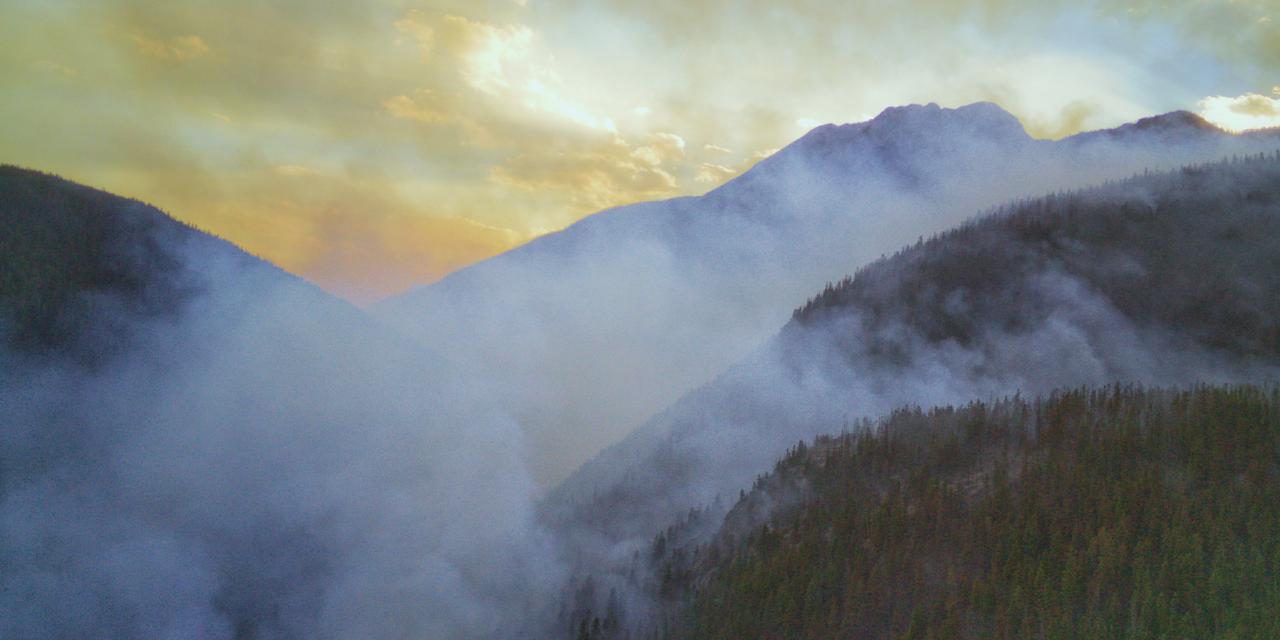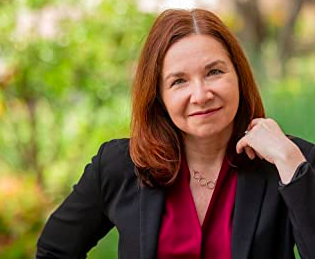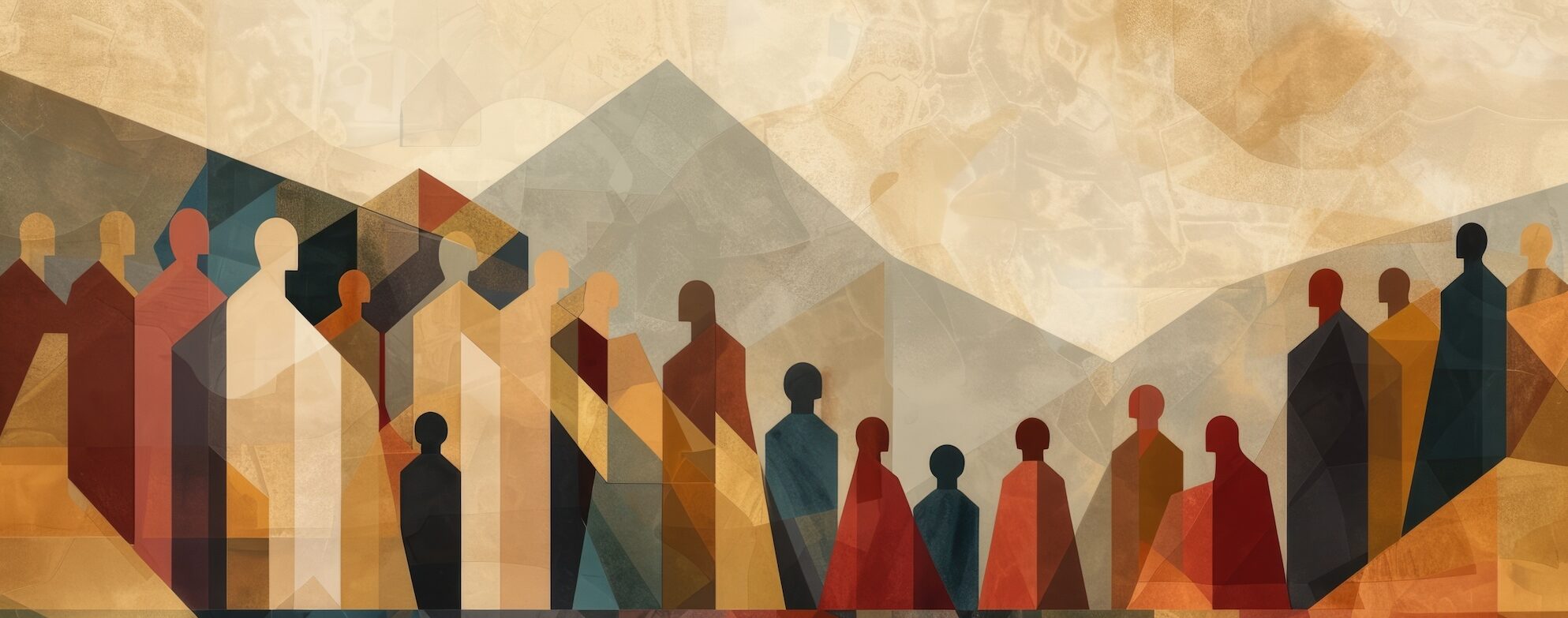The following is an interview between Christ&Cascadia editor Forrest Inslee and climate scientist Katharine Hayhoe. Together, they discuss Katharine’s new book Saving Us: A Climate Scientist’s Case for Hope and Healing in a Divided World, how and where she finds hope, and how to begin climate conversations in Cascadia.
Forrest: Katharine, it’s such an honor to be with you. Thank you for taking time to discuss your new book. Perhaps you could tell me, why this book at this time?
Katharine: Well, I am not a big book writer, as anyone who follows me will know. I like
to do videos, I like to do social media, I even just joined TikTok last week—with my cat, Dr. Evil. But the reason I wrote this book is because I couldn’t find anything else to answer the number one question that I am getting asked every single day—and that question is, “What gives you hope?”
As a climate scientist, I’m a good person to ask that question to, right? Because if a climate scientist can find hope in a world where every new scientific study seems more dire than the one before, every new headline tells of greater disasters, every next headline after that tells us how far we’re falling short in meeting our climate targets and our climate commitments—if I can find a source of hope, can’t everyone?
So, I started looking, myself, because I can’t keep on doing what I’m doing if I’m just overwhelmed with bad news all the time. First, I looked to the science and I realized that, as dire as the news is, there is hope—very clear hope—in the science. There is hope because the science says that our future is literally in our hands. The choice is up to us. Some impacts are already here today and some of those impacts are already bad, but they are just a fraction of what we can avoid if we act now. Hope is not the guarantee of a better future. It’s the chance of a better future and science says there is a chance.
But where else does our hope come from? Often, it comes from recognizing that we’re not alone.
So often we picture climate action as a giant boulder sitting at the bottom of an impossibly steep cliff, with only a few hands on that boulder trying to push it up. And we think if we added our hand, it would do absolutely nothing. But if we start to look around and see who is already acting on climate, we realize the giant boulder is already at the top of the hill and it’s already rolling down the hill in the right direction and it’s already got millions of hands on it. So, if we added our hand, it might go a little bit faster. And if we got everybody else at our place of work, our neighborhood, our school, our church, or our city–if we got them to add their hands too, it could go a lot faster and we could get it going down that hill. Recognizing that we are not alone–that we really are together—that is a huge part of what gives us hope.
Forrest: Katharine, so many books in the area of environmental advocacy today have titles like “save the whales,” “save the trees,” or “save the earth.” You call your book Saving Us though, and so I’m wondering, what is that about?
Katharine: You’re absolutely right. When it all comes down to it, it’s not about saving the planet. The planet, itself, will be orbiting the sun long after we are gone. What is at risk is us—us living things on this planet. And of all living things, after the polar bear, we humans, because we have built our entire civilization on the assumption that climate is relatively stable. We have two-thirds of our biggest cities within a few feet of sea level. We have parceled out all our water and our agricultural land to where now there isn’t enough to go around. We are the ones who have built this vulnerability into our very system and it is we who are most at risk. But unlike the polar bear, we have agency. We understand why it’s happening. We are responsible for what’s happening. It’s up to us to actually try to fix it.
Forrest: When I interview authors, I often ask them what they want to contribute to the larger conversation going on in the world about their particular topic. Your book definitely adds a lot to that ongoing conversation about earth care, but one unique thing about your book is that it’s actually addressing the conversation, itself, at kind of a meta level. So, I’m wondering, what is the message that you have for people about being part of the larger conversation on earth care?
Katharine: So, after what gives you hope, the next question I always get is what’s the most important thing I can do? Tell me the most important way that I can put my hand on that boulder to get it rolling faster down the hill. And people often expect that I’m going to talk about light bulbs, recycling, diet, electric cars, public transportation, or solar panels. And, don’t get me wrong, all of those things absolutely do help because they’re cutting our personal carbon footprint. But they’re also changing us. They’re changing our investment, they’re changing our perspective, they’re changing what we can talk about with other people, which in turn can change what they’re considering doing.
But even that is not the most important thing. The most important thing we can do is what most of us are not doing. Eighty-six percent of us, according to a survey just last week, are not talking about climate change.
Why does talking matter? Because it is about using our voices to advocate for change. If we look back in history at the massive ways that our industrialized society has changed, change began not when CEOs or presidents or prime ministers or wealthy people decided that change had to come–it began when individual people did what they could. The most effective thing was that they used their voices to advocate for the abolition of slavery; for women to get the vote; for the end to apartheid; or for civil rights. It was people using their voice that made that difference. So, that’s why I wrote the book: to encourage people to do what we’re not doing, which is using our voice. Not to dump a ton of science on people but to start with something we share, connect the dots to how climate change is affecting it, and then talk about positive real world constructive solutions that they can get on board with.
So, if you don’t mind, let’s try that out now. Tell me something you care about that you might share with people who are listening in.
Forrest: The context to the answer I’m going to give is that I’m related to the Governor of Washington State, Jay Inslee. And I’m proud of him. I love his environmental policies and support them. One plan that I am particularly fond of is his plan to electrify the ferryboat system. In this state, our ferry system is not just a tourist attraction—I mean a lot of tourists use it—but all told, in a given year you’ll have 25 million users that are both tourists and commuters. His goal over time is to convert ferries to hybrid and eventually electric, which would have a big impact.
There are actually people who oppose this policy, this proposed change to electrify the fairy system. Mostly, I think, because it comes from Jay Inslee and people see him as an environmentalist and for some people that’s a bad thing. They equate the word “environmentalist” to liberal, or tree hugger, or nutcase. And they automatically close their ears to his ideas. Honestly, I find it particularly hard to talk to people who oppose the electric ferry project or who oppose other policies in this state that are meant for the long-term benefit of the environment.
Katharine: That’s a good reminder that the same approach doesn’t work with everyone and sometimes we just aren’t the right person to have that conversation. Honestly, with your last name, for some people that might be it—the door might be closed.
I live in Texas and in my book I mention how I was talking to a group of farmers a couple of years ago. I was explaining how what we’re seeing today is not a natural cycle, it’s a long-term trend; it’s getting warmer, it’s getting drier, and it’s being caused by us. And at the end of it, one very honest farmer came up to me and he said, “You know, everything that you say makes sense and I would like to agree with you. But if I agree with you, I have to agree with Al Gore, and I could never do that.” He was very honest about the fact that his identity was so tied to his politics that he literally could not accept facts that his mind acknowledged were true because of where his heart was.
So, I learned from that. The next year I went to talk to a group of water managers and I was speaking after two state elected representatives, both of whom overtly reject the reality of climate change. They are on record saying it’s not real, it’s not us, it’s not bad. I decided I was going to conduct an experiment. I was going to talk all about the observed trends and the future projections and what that meant for water in Texas—for our reservoirs, irrigation, city water supply, and long-term plans. But I was never going to mention the words “climate” and “change” together.
I gave this whole presentation without mentioning these two words together at all. Other than that, it was the same content, the same solutions, and the same everything. And at the end, I will never forget, this woman came running up to me and she grabbed my hand and said, “That was fantastic. I agree with everything you said. Those people who talk about global warming, I don’t agree with them at all, but this makes sense.” We had been able to talk about it in a way that did not trigger whatever personal aversions people have to politics, to politicize terms, and we were able to figure out that, yeah, we actually agreed about everything, except what some people would call it. When it all comes down to it, what unites us is far more than what divides us.
So, Forrest, let me ask you a question: what are some things in Washington State that you feel most people would agree matter to them?
Forrest: One point of shared interest with people in my region has to do with the mountains. Both residents and tourists appreciate the beauty of the Cascade Mountains and the Olympic mountain range but, honestly, in recent years it’s kind of hard to see them. On some days the view tends to be obstructed by smog much of the time. I suppose if we started our conversations with that shared problem then electric ferries, which produce no pollution, might actually seem a less threatening or less triggering idea.
Katharine: Of course, as the world gets warmer, wildfires are burning greater and greater areas, and the wildfire season is starting earlier and ending later. That creates additional pollution that chokes the air people are breathing. You not only can’t see the view, you literally can’t take a clean breath of air outside. I don’t know how it was for you this summer, but I know I have friends who live just a little further east and their kids couldn’t even go play outside for weeks on end because the smoke was so bad.
Forrest: Yes, I found that people’s view on climate change has shifted as they’ve seen the impact it has on their kids. Dirty air changes from just an environmental issue to a parenting issue as well. When your kids can’t go outside to play because the air is too hazardous, that really hits home.
Katharine: It does. And it’s interesting that you said that because one of the perspectives often holding us back is that we think of this only as an environmental issue. Yet if you care about your health, or the health of your family, or people in your community, it’s a health issue. It is also a sports issue. It affects winter snow and recreation, as well as sport fishing. It is a nature issue, if you’re a nature lover. It is an economic issue because it affects the economy and it affects the safety of our homes.
So, whoever you are, you already have every reason you need to care about climate change. You don’t need new reasons. You don’t need new values. You don’t need a new identity. You just have to figure out how what you already care about is being affected by climate change.
Forrest: I know that my daughter’s generation struggles with climate despair and they don’t have a lot of hope sometimes for the future. When I think about it, I’m really sure that other parents notice this about their kids as well, and the concern we have for our kids could really be a profound starting place for a conversation about environmental issues.
Katharine: A new study just came out surveying young people in 10 countries and, overwhelmingly, young people are not just alarmed about climate change but panicked, depressed, and overwhelmed. I mean, I see that among my own undergraduate students. One of my colleagues had a student who was so panicked that if she just said the words climate change, the student would have a panic attack. That fear is rational. It is informed by an awareness of how truly bad this is.
Yet, this is why we need to learn to use our voices. Sometimes we might be using our voices—literally talking—and at other times we might be using them through writing, through sharing. We might use ours in social media, making videos, or teaching, or simply being engaged and active in our community, neighborhood organization, city, or place of work. We can even use our voice in terms of where we bank, what credit cards we have, where our retirement savings are invested. There are so many different ways we can use our voices and they’re unique to each of us.
Forrest: So, how did you come to be a person who uses her voice so effectively to speak up for the environment?
Katharine: Well, it’s not just the environment I’m speaking up for. I feel like I’m speaking up for all of us. I definitely get discouraged. I definitely get frustrated. I have stories in the book of conversations that went horribly wrong, and they’re often sort of unintentionally humorous. I feel like I’ve learned the most from my failures, in retrospect. But I keep on going because it is the truth, and because of what’s at stake. It’s my son’s future that’s at stake. As a mom, I would do anything for him. And today, anything means fighting for a fix to climate change.
Cover photo credit: Landon Parenteau



